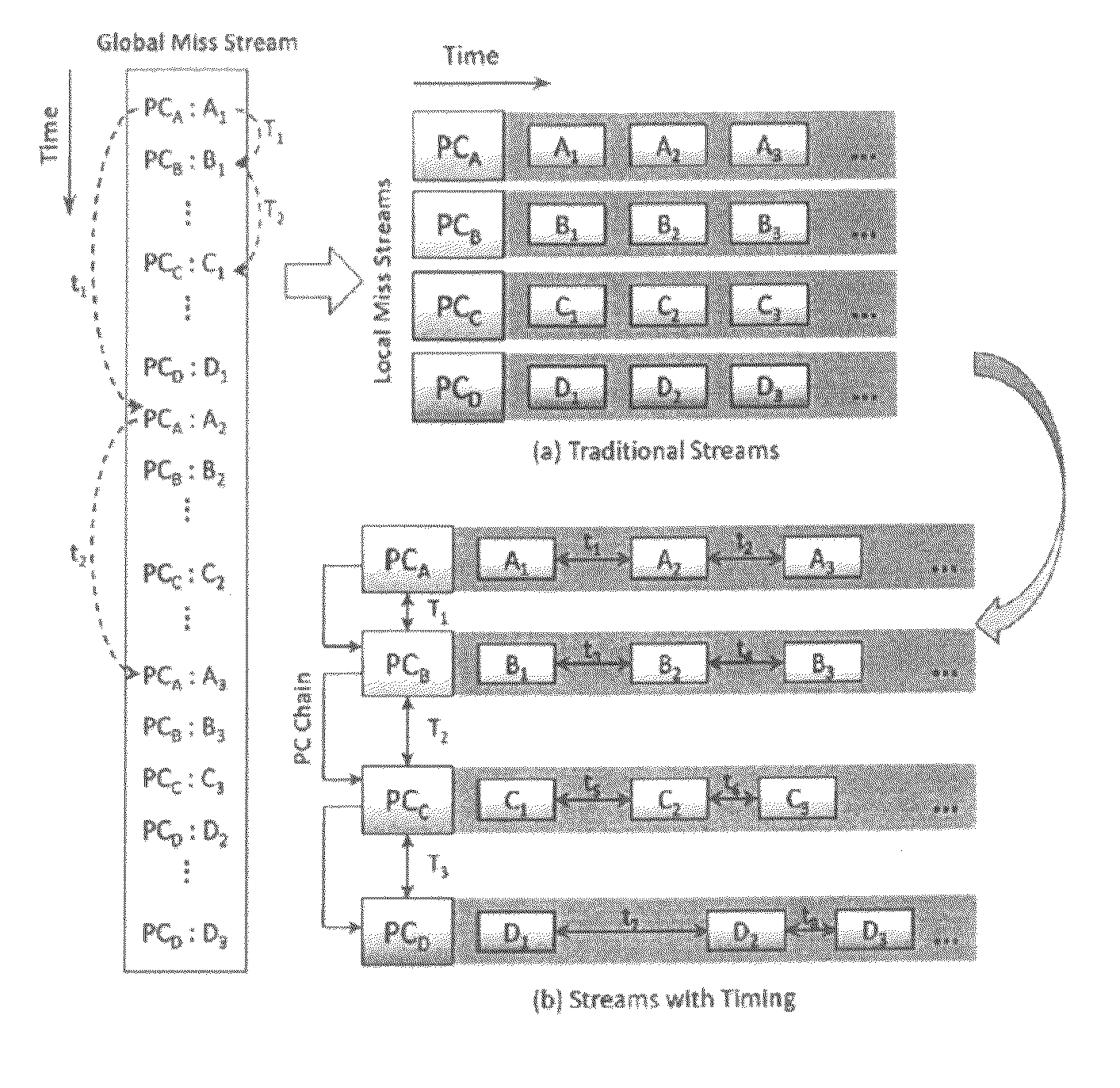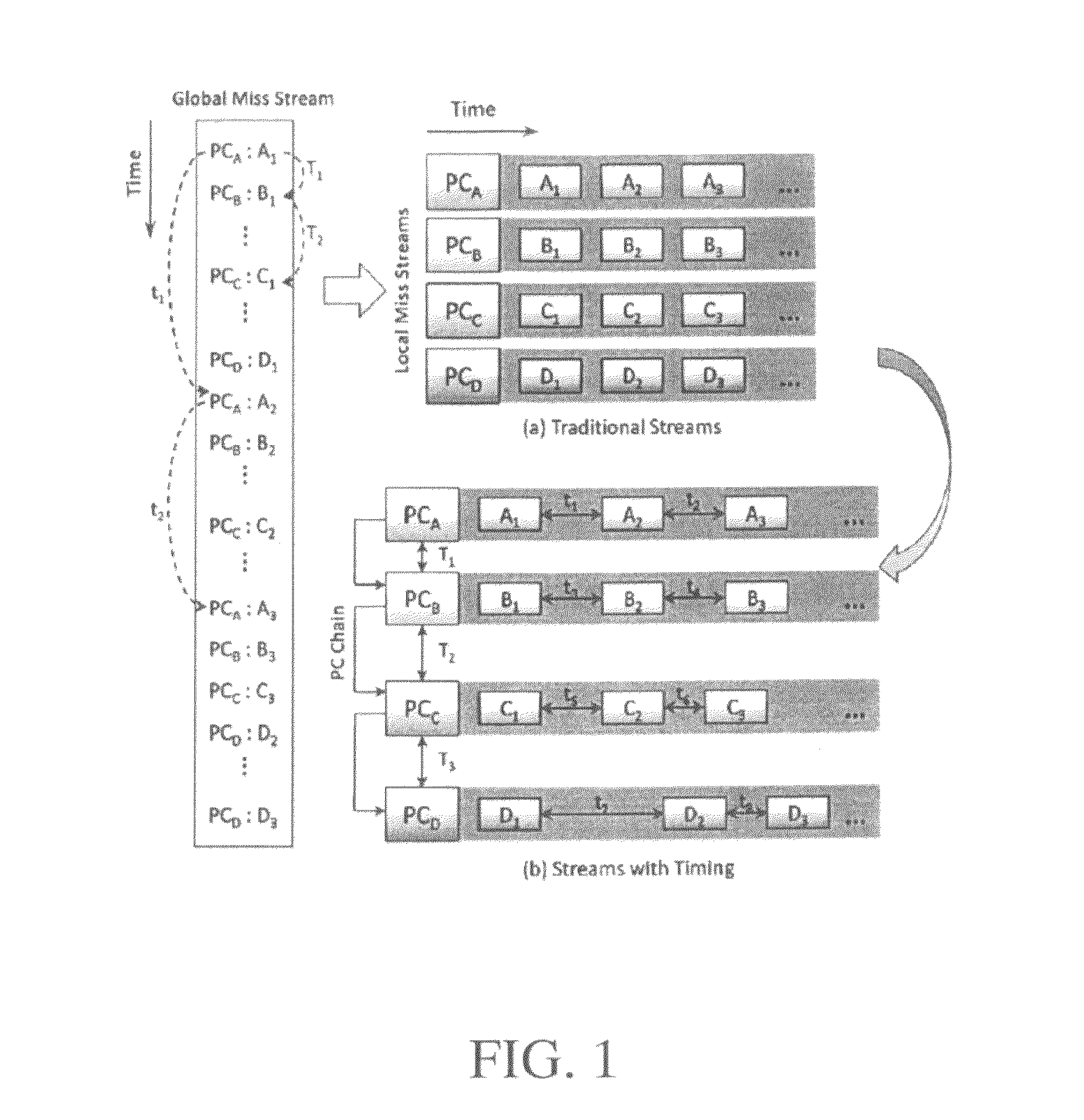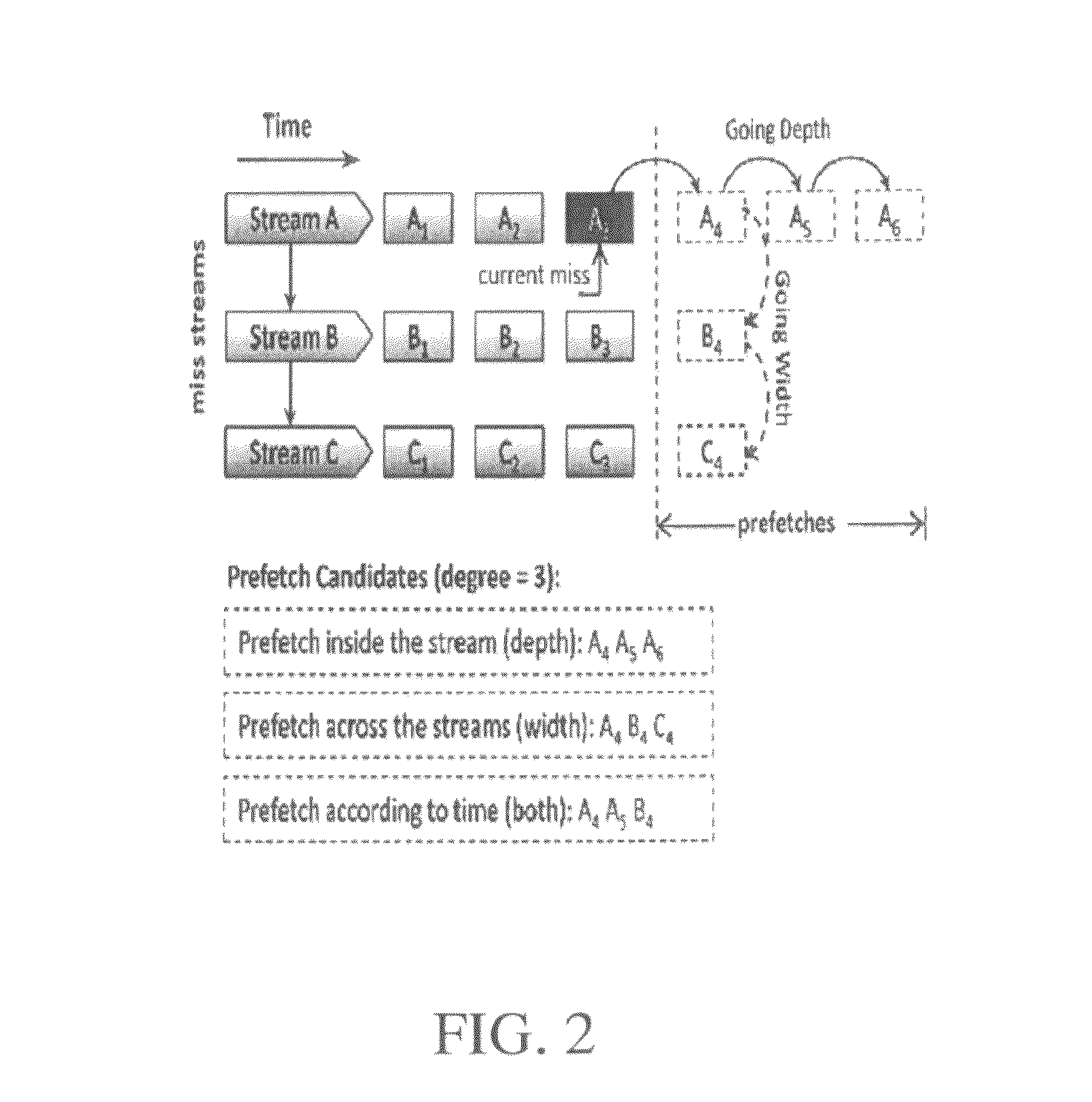Timing-aware data prefetching for microprocessors
a microprocessor and data prefetching technology, applied in the field of data prefetching, can solve the problems of significant performance bottlenecks in computer architectures, limit performance, unbalanced performance, etc., and achieve the effects of improving prediction accuracy and prefetch coverage, reducing untimely prefetching, and increasing overall processor performan
- Summary
- Abstract
- Description
- Claims
- Application Information
AI Technical Summary
Benefits of technology
Problems solved by technology
Method used
Image
Examples
Embodiment Construction
[0032]The present invention increases prefetching timeliness by introducing a stream timing technique. Based on the stream timing technique, this invention introduces a timing-aware data prefetching methodology. The invention also provides a timing-aware prefetcher, including a timing aware stride (TAS) prefetcher, which adds the time consideration of the stream timing technique to improve upon stride prefetchers used in recent microprocessor architectures. The TAS prefetcher outperforms currently existing prefetchers. This invention is useful for all major microprocessor architectures, including x86, MIPS, PowerPC, and embedded architectures such as ARM.
[0033]In one embodiment of the invention, the stream timing technique keeps the timing information for each localized data access stream and chains them according to the time. The time distances among accesses within a stream or across different streams are taken into consideration to direct prefetching. The timing-aware prefetching...
PUM
 Login to View More
Login to View More Abstract
Description
Claims
Application Information
 Login to View More
Login to View More - R&D
- Intellectual Property
- Life Sciences
- Materials
- Tech Scout
- Unparalleled Data Quality
- Higher Quality Content
- 60% Fewer Hallucinations
Browse by: Latest US Patents, China's latest patents, Technical Efficacy Thesaurus, Application Domain, Technology Topic, Popular Technical Reports.
© 2025 PatSnap. All rights reserved.Legal|Privacy policy|Modern Slavery Act Transparency Statement|Sitemap|About US| Contact US: help@patsnap.com



